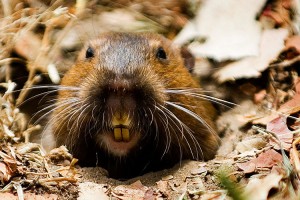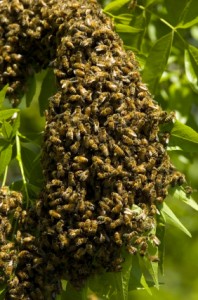Ground squirrels are invading Santa Barbara! Among the top three reasons our Santa Barbara pest control customers call us for pest control service, ground squirrels have been wreaking havoc across the county. These rodent pests are known for their voracious appetite for destruction and are currently on a very small, sometimes cute rampage in our communities.
All About The Common Ground Squirrel
Ground squirrels are a member of the squirrel family of rodents which are of course unique in that they live on or in the ground as opposed to some of their tree dwelling brothers and sisters.
Ground squirrels are often confused with their larger cousins known as marmots or prairie dogs or their smaller cousins the chipmunk. Not unlike their prairie dog pals, they are well known for their tendency to rise up on their hind legs whenever sensing danger or when needing to see over brush and tall grass.
An omnivorous rodent, ground squirrels will eat whatever comes their way whether it be nuts, seeds, fruits or fungus but also occasionally insects, eggs and even small animals when given the opportunity!
A highly social species, ground squirrels typically live in large groups.
Damage Caused
Damage, of course, varies from infestation to infestation but ground squirrels are known to kill brush, landscaping, and even kill trees by girdling. It is quite amazing the amount of damage these rodents can cause when their populations are uncontrolled.
DIY Ground Squirrel Pest Control
Set Ground Squirrel Traps
Setting traps on your property to capture your resident rodents is likely to be your most efficient way of lowering your local population. Making sure to set them close to the squirrels’ most traveled routes, making it easy for the squirrel to deviate into the trap to explore for food. Effectiveness may vary, so check your traps regularly.
Burrow Fumigation
Fumigation of the ground squirrel burrow using any number of rodent fumigation products like The Giant or Gopher Gasser are also known to be effective at clearing entire dens of ground squirrels and other rodent pests.
Santa Barbara’s Best Ground Squirrel Live Animal Trapping
With years of experience under our belts and hundreds of satisfied customers in our portfolio, we are well known throughout Santa Barbara County as ground squirrel trapping experts. We use only the most advanced trapping and baiting systems available that are not only effective but humane as well. Can’t get control of your ground squirrel problem? Call us or e-mail us today!
Overwhelmed by the Santa Barbara ground squirrel problem?
Here’s a funny video of humans fighting back against their squirrel problems.



